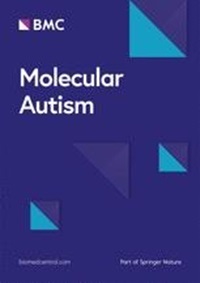Trajectory of depressive symptoms over adolescence in autistic and neurotypical youth
IF 6.3
1区 医学
Q1 GENETICS & HEREDITY
引用次数: 0
Abstract
Adolescence coincides with a dramatic rise in the onset of psychiatric conditions including depression. Depression symptoms may be particularly prevalent and impairing for youth with autism spectrum disorder (ASD). While prior research suggests adolescence is associated with worsening depression symptoms for typically developing (TD) and autistic youth, it is unclear if they follow a similar course. The study examined the trajectory of depressive symptoms in autistic and neurotypical youth over a 4-year longitudinal study using linear and logistic mixed effects models. In youth with clinically relevant depressive scores (t-score > 65), moderating factors (i.e., diagnosis, age, puberty, sex) were explored. During Year 1, the sample included 244 youth 10-to-13 years: 140 in the ASD group (36 females) and 104 in the TD group (46 females). Autistic youth had elevated depression scores compared to TD peers (p < 0.001) and females were higher than males in both groups (p = 0.001). There was significant diagnosis by age (p < 0.001) and diagnosis by pubertal stage (p < 0.05) interactions. In the ASD group, elevated depressive scores presented in early adolescence and decreased during middle adolescence and puberty, whereas the TD group showed the opposite trend with an increase in depression symptoms with advancing development. Limitations include an unequal sex distribution (fewer females), non-representative autistic sample (e.g., cognition and race/ethnicity), and potential confound of the COVID-19 pandemic. Autistic youth present with higher rates of depressive symptoms early in development; yet, approaching middle adolescence and puberty, the symptom trajectory in the autistic youth declines coinciding with an increase in the TD youth. While group trajectories are divergent, they lead to similar levels of depression in late adolescence with higher symptoms in females. Findings suggest a period of quiescence in depressive symptomology influenced by biopsychosocial factors impacting affective profiles.自闭症和神经畸形青少年青春期抑郁症状的变化轨迹
青春期是包括抑郁症在内的精神疾病发病率急剧上升的时期。对于患有自闭症谱系障碍(ASD)的青少年来说,抑郁症状可能尤其普遍和严重。虽然先前的研究表明,青春期与典型发育期(TD)和自闭症青少年抑郁症状的恶化有关,但目前还不清楚他们是否会经历类似的过程。这项研究采用线性和逻辑混合效应模型,对自闭症青少年和神经畸形青少年的抑郁症状轨迹进行了为期四年的纵向研究。在具有临床相关抑郁评分(t-score > 65)的青少年中,对调节因素(即诊断、年龄、青春期、性别)进行了探讨。第一年的样本包括 244 名 10-13 岁的青少年:自闭症组 140 人(36 名女性),TD 组 104 人(46 名女性)。与 TD 青少年相比,自闭症青少年的抑郁评分较高(p < 0.001),两组中女性抑郁评分均高于男性(p = 0.001)。诊断与年龄(p < 0.001)和诊断与青春期阶段(p < 0.05)之间存在明显的交互作用。在ASD组中,抑郁评分在青春期早期升高,在青春期中期和青春期降低,而TD组则表现出相反的趋势,抑郁症状随着发育的推进而增加。该研究的局限性包括性别分布不均(女性较少)、自闭症样本不具代表性(如认知能力和种族/族裔)以及 COVID-19 大流行可能造成的混淆。自闭症青少年在发育早期出现抑郁症状的比例较高;然而,在接近青春期中期和青春期时,自闭症青少年的症状轨迹有所下降,而自闭症发育迟缓青少年的症状轨迹则有所上升。虽然各群体的症状轨迹不同,但他们在青春期晚期的抑郁程度相似,女性的症状更高。研究结果表明,受影响情感特征的生物-心理-社会因素的影响,抑郁症状会有一个静止期。
本文章由计算机程序翻译,如有差异,请以英文原文为准。
求助全文
约1分钟内获得全文
求助全文
来源期刊

Molecular Autism
GENETICS & HEREDITY-NEUROSCIENCES
CiteScore
12.10
自引率
1.60%
发文量
44
审稿时长
17 weeks
期刊介绍:
Molecular Autism is a peer-reviewed, open access journal that publishes high-quality basic, translational and clinical research that has relevance to the etiology, pathobiology, or treatment of autism and related neurodevelopmental conditions. Research that includes integration across levels is encouraged. Molecular Autism publishes empirical studies, reviews, and brief communications.
 求助内容:
求助内容: 应助结果提醒方式:
应助结果提醒方式:


